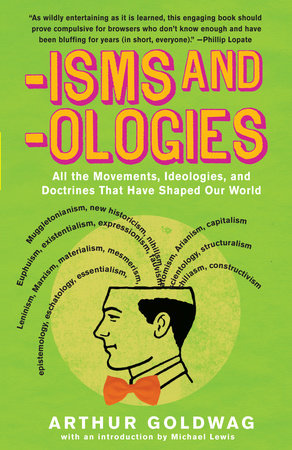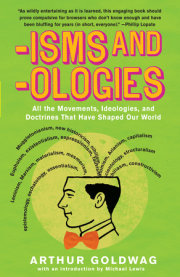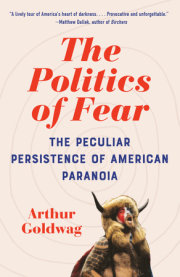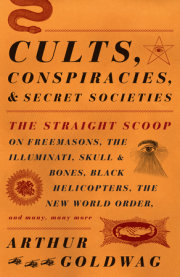Politics& HistoryAbolitionismThe eighteenth- and nineteenth-century movement to ban the institution of slavery. Sentiment against slavery had become widespread in England by the 1780s; led by Quakers, and with the support of Methodists and Baptists, the movement scored its first significant victory in 1807 with the passage of the Abolition of the Slave Trade Act. On August 1, 1834, all slaves in the English empire were emancipated.The first abolitionist society in America, the Society for the Relief of Free Negroes Unlawfully Held in Bondage, was founded in Philadelphia in 1775. Benjamin Franklin, an ambivalent slave owner (he arranged to have his slave freed upon his death but outlived him), was a member. Other prominent founding fathers, such as John Jay and Alexander Hamilton, advocated the elimination of slavery. George Washington, though sympathetic to their position, avoided committing himself to it publicly–he, too, made arrangements to free his slaves in his will. But it wasn’t until the 1820s and 1830s that, inspired by the preaching of Charles Grandison Finney (1792—1875) and other charismatic evangelical preachers and the journalism of William Lloyd Garrison (1805—79), the abolitionist movement reached critical mass. The American Anti-Slavery Society was organized in Philadelphia in 1833; James G. Birney (1792—1857) ran for president in 1840 and 1844 as the candidate of the abolitionist Liberty Party. In the mid-1840s both the Methodists and the Baptists split into Northern and Southern denominations over the issue; in 1852 Harriet Beecher Stowe (1811—96) published Uncle Tom’s Cabin. When Abraham Lincoln met her, he is reported to have said, “So you’re the little woman who wrote the book that made this great war.”
AfrocentrismA contemporary outgrowth of Pan-Africanism. Formulated in the early twentieth century, Pan-Africanism is the idea that black-skinned people around the world–the African diaspora–form a distinct nationality. This idea was promoted by black nationalists, such as Marcus Garvey (1887—1940), Malcolm X (1925—65), and adherents of the Nation of Islam, as well as more mainstream figures like W. E. B. DuBois (1868—1963).Temple University scholar Molefi Kete Asante coined the term Afrocentrism in 1980, which is the belief that African history and culture must be reexamined on their own terms, because they are necessarily distorted, suppressed, and marginalized when they are viewed through a Eurocentric, colonialist lens. Afrocentrists promote a positive view of African heritage, emphasizing the achievements of its civilizations, its unique spirituality, and its communal values. Though the holiday of Kwanzaa was created by the African American scholar Maulana Karenga in 1966, it is obviously a product of the same zeitgeist; the Howard University scholar Carter G. Woodson (1875—1950) created Negro History Week as early as 1926.Martin Bernal, a white professor emeritus at Cornell University who was a sinologist for most of his career (and who is the grandson of Sir Alan Gardiner, a towering Egyptologist of the last century), is one of the most visible and controversial advocates of Afrocentrist history today. In his multivolume work Black Athena (1987), he argues that the roots of classical Greek civilization are in the Semitic and black African cultures of the Middle East, among the latter of which he includes Egypt. Classical scholars have favored an Aryan view of Greek origins, he says, because of their unacknowledged racism and anti-Semitism.
AnarchismFrom the Greek an (the absence of) and archos (authority; or a ruler), anarchy is a principled opposition to all but the most rudimental and noncoercive governments.Anarchism was first propounded as a philosophical stance by Zeno of Citium (333—261 BCE), the founder of the philosophical school of Stoicism, who declared that governments and other hierarchical institutions are not only unnecessary, but responsible for most of society’s ills. Since people are inherently rational, anarchists believe, the most equable form of government is one in which citizens freely agree to live together, sharing their property and abiding by voluntary rules.The leading theorists of anarchism in the nineteenth century were the Englishman William Godwin (1756—1836); the Frenchman P. J. Proudhon (1809—65), who coined the phrase “Property is theft”; the Russians Peter Alexeevich Kropotkin (1842—1921), also known as the Anarchist Prince, and Mikhail Bakunin (1814—76), who broke with Marx over the question of whether government should be banned immediately after the revolution or allowed to gradually wither away after communism had taken root. The 1886 Haymarket riot in Chicago was blamed on anarchists; anarchists were forbidden to enter the United States in 1901 after Leon Czolgosz, a mentally disturbed anarchist sympathizer (and a former Republican), assassinated President McKinley. Emma Goldman (1869—1940) was arrested and briefly imprisoned as a suspected conspirator. When, after many more arrests, Goldman was finally deported in 1919, J. Edgar Hoover, then the twenty-four-year-old head of the General Intelligence Division of the Justice Department, called her “one of the most dangerous anarchists in America.” The trial of the anarchists Sacco and Vanzetti would rivet the nation in 1921 (they were finally executed in 1927). Noam Chomsky, the renowned linguist and political gadfly, remarked in a 1995 interview that I was attracted to anarchism as a young teenager . . . and haven’t seen much reason to revise those early attitudes since. I think it only makes sense to seek out and identify structures of authority, hierarchy, and domination in every aspect of life, and to challenge them; unless a justification for them can be given, they are illegitimate, and should be dismantled, to increase the scope of human freedom.Many of the groups involved in the antiglobalization movement today are deeply influenced by anarchist principles.Antarchy, a word that has largely fallen out of use, literally means “against government” and is sometimes used to distinguish between the philosophy of conservative libertarians, who oppose big government but not private property, and the radical egalitarianism of anarchists, anarcho-syndicalists, and the like.
Anarcho-syndicalismAlso called syndicalism, anarcho-syndicalism is a version of anarchism in which labor unions join together to overthrow capitalism via general strikes and other nonpolitical means. (“One Big Union” was the slogan of the Industrial Workers of the World, better known as the Wobblies.) Once a classless society is achieved, the syndicalists believe, a voluntary confederation of unions could fill the role formerly played by governments. Anarcho-syndicalists were at the vanguard of the revolution in Spain in 1936.One of the many humorous anachronisms in the film Monty Python and the Holy Grail (1975) occurs when Arthur hails himself to a peasant as the king of the Britons. Nonplussed, the peasant replies, “I didn’t know we had a king. I thought we were an autonomous collective.” When Arthur demands to know who his lord is, the peasant angrily replies, “I told you, we’re an anarcho-syndicalist commune.”
AntidisestablishmentarianismAntidisestablishmentarianism was coined to describe the movement that arose in opposition to Prime Minister W. E. Gladstone’s (1809—98) ultimately successful efforts to disestablish the Church of Ireland (i.e., revoke its status as the official, state-sanctioned religion). The act passed parliament in 1869, freeing Ireland’s Roman Catholics from the onerous obligation of tithing to the Anglican Church as well as their own. The word lived on as a novelty; it is seldom heard nowadays except at spelling bees.Antidisestablishmentarianism is frequently cited as the longest nonmedical, nonscientific, or nontechnical word in the English language. It’s not–a facetious coinage dating from the eighteenth century, floccinaucinihilipilification, beats it by one letter. A portmanteau of three Latin words (flocci, nauci, and pili), which all mean “having little or no value,” plus nihil, which means “nothing,” and the suffix fication, which means “the making of,” floccinaucinihilipilification is thus the act of deciding that something has no value. North Carolina’s former senator Jesse Helms briefly put the word on the map in 1999 when he used it in reference to his evolving thoughts about the Comprehensive Test Ban Treaty, which he had come to oppose. He said he learned it from Senator Pat Moynihan.Sesquipedalianism, another playful coinage that frequently finds its way into trivia contests and spelling bees, is of a much older vintage than either of the words defined above; it comes from “Proicit ampullas et sesquipedalia verba,” a line in Horace’s (65—8 BCE) The Art of Poetry, which can be translated as “He throws aside his paint pots and his words that are a foot and a half long.” Sesquipedalianism (or “foot-and-a-half-longism”) is used today, almost always ironically, to mean the propensity for using very long words.
Antiglobalism See
Globalism.Anti-SemitismHatred of Jews as a matter of moral and political principle. The word implies more than mere prejudice; it embraces political and social policies designed to purge Jews from positions of status, authority, or economic independence. In its most extreme manifestations, anti-Semitism seeks the outright extermination of the Jews.The word was coined in 1879 by Wilhelm Marr (1819—1904), a journalist, racial theorist, and the founder of the League of Anti-Semites, an organization dedicated to expelling Jews from Germany. Marr believed that the Jews, who had only been officially emancipated eight years earlier, had already managed to seize control of German finance and industry and were threatening to destroy the German people. By 1882 an anti-Semitic party controlled some seats in the Reichstag; in the 1890s Karl Lueger (1844—1910) won the mayoralty of Vienna with an explicitly anti-Semitic platform, deeply impressing the young Adolf Hitler (1889—1945).Marr, of course, was not the first to see the Jews as an imminent threat to civilization. The word he coined was a euphemism for the harsher German word Judenhass, or Jew hatred, a sentiment that dates back at least to the beginnings of the Christian era. Indeed, some of the Gospels, such as John 19:6—7, in which Jewish priests and officials howl for Jesus’ crucifixion, portray the Jews as his chief adversary. Christian grace was understood to have succeeded Mosaic law; Judaism was not just superannuated but discredited.As the renowned Holocaust historian Raul Hilberg wrote in his landmark volume The Destruction of the European Jews (1961), in the Christian era,there have been three anti-Jewish policies: conversion, expulsion and annihilation. The second appeared as an alternative to the first, and the third as an alternative to the second . . . The missionaries of Christianity had said in effect: You have no right to live amongst us as Jews. The secular rulers who followed had proclaimed: You have no right to live among us. The German Nazis at last decreed: You have no right to live.European Jews had been slaughtered by the thousands during the time of the Crusades; they were expelled from England in 1290 and from the Iberian peninsula in 1492. Throughout the Middle Ages and the time of the Reformation and on into the twentieth century in Russia, they have been accused of preparing their Passover matzos with the blood of Christian children, of practicing witchcraft, and of spreading the plague. Forbidden to own land or join craft guilds, they were forced into trade and money lending, for which they were excoriated as usurers and accused of seeking to control the world’s economic systems. In rural Eastern Europe they were the victims of periodic pogroms; until relatively recent times, most European cities confined them to ghettos. Martin Luther, in his On the Jews and Their Lies (1543), counseled Europe’s rulers to treat their Jewish subjects as a physician treats a gangrenous limb:Cut, saw, and burn flesh, veins, bone, and marrow. Such a procedure must also be followed in this instance. Burn down their synagogues . . . force them to work, and deal harshly with them, as Moses did in the wilderness, slaying three thousand lest the whole people perish . . . If this does not help we must drive them out like mad dogs, so that we do not become partakers of their abominable blasphemy and all their other vices and thus merit God’s wrath and be damned with them.In 1903 a czarist official named Serge Nilus published The Protocols of the Learned Elders of Zion, which purported to be a document produced at the First Zionist Congress in Basel, Switzerland, in 1897, where Jews and Freemasons had supposedly plotted to take over the world. Though it has long been exposed as a hoax–it was adapted from a French anti-Masonic tract called Dialogues in Hell, whose protagonists are Montesquieu and Machiavelli–it continues to be widely circulated, especially in the Arab world.Adolf Hitler’s Mein Kampf, published in two volumes in 1925 and 1926, vividly described the monstrousness of the Jews:With satanic joy in his face, the black-haired Jewish youth lurks in wait for the unsuspecting girl whom he defiles with his blood, thus stealing her from her people. With every means he tries to destroy the racial foundations of the people he has set out to subjugate. Just as he himself systematically ruins women and girls, he does not shrink back from pulling down the blood barriers for others, even on a large scale. It was and it is Jews who bring the Negroes into the Rhineland, always with the same secret thought and clear aim of ruining the hated white race by the necessarily resulting bastardization, throwing it down from its cultural and political height, and himself rising to be its master.In 1933, when Hitler became Germany’s chancellor, he was finally in a position to put his theories into practice. Twelve years later, between five and six million European Jews had been systematically murdered.Today the most virulent anti-Semitic rhetoric can be heard in the Islamic world, which, though far from homogenous in its beliefs or politics, is seemingly unanimous in its detestation of Zionism and Israel. In 2003, Mahathir Mohamad, the prime minister of Malaysia, received a standing ovation at the Tenth Islamic Summit Conference of Islamic nations when he declared, “Jews rule this world by proxy. They get others to fight and die for them.”
Authoritarianism See
Totalitarianism.BalkanismThe state of being balkanized is when a stable country, empire, or confederation is carved up into smaller, frequently hostile units; the term evokes the bloody history of the Balkans in the twentieth century. After the collapse of the Ottoman and the Austro-Hungarian empires, two world wars, the rise and fall of the Soviet Union, at least three Balkan wars, and the breakup of Yugoslavia, whatever overarching sense of identity that might have once bound together the countries and territories of the Balkan peninsula (Albania, Bosnia, Herzegovina, Bulgaria, Croatia, Greece, Macedonia, Serbia, Montenegro, Moldova, Romania, Slovenia, and Kosovo) has long since departed; the region is now definitively fractured along ethnic and religious lines.“Shared moral principles enable people with a variety of backgrounds and interests to interact with one another within a commonly understood framework,” wrote the conservative thinker Thomas Sowell in the July 2001 issue of Capitalism Magazine.But busybodies who Balkanize our morality, our language and our political life are destroying that framework. Patriotism is more than a sentiment. It is a necessity. To keep what history has presented to us, Americans must either love it or lose it. Balkanize America and you risk becoming the Balkans.
Copyright © 2007 by Arthur Goldwag Introduction by Michael Lewis. All rights reserved. No part of this excerpt may be reproduced or reprinted without permission in writing from the publisher.










